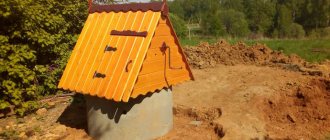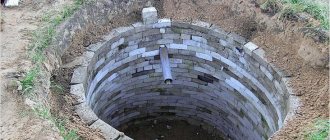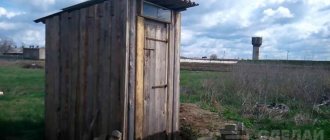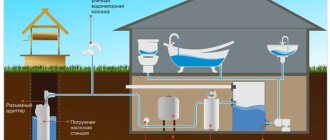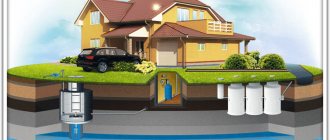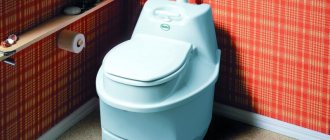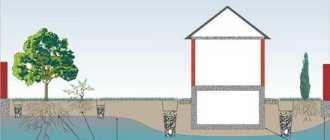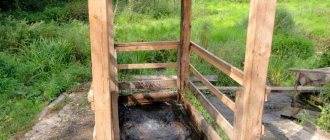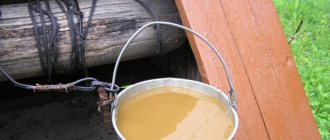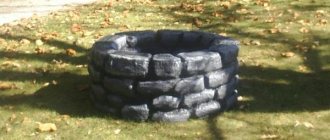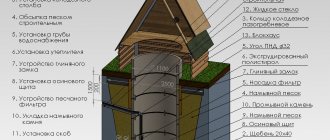What is an Abyssinian well?
The Abyssinian dacha well is a needle-shaped well that provides water from the first aquifer. Another name for this is the Assyrian well.
In 1867-1868, in African Ethiopia, called Abyssinia at the end of the nineteenth century, a colonial war was fought between the locals and the British. Ethiopia is a hot country and the fighting took place in the desert. The problem of supplying troops with water became task number one.
Then they developed a new way to supply water to the army of colonists. The Britons tested engineer Norton's drill rig. The invention advanced the invaders deeper into the desert and drove the natives into the waterless part of the wasteland. Which led to the surrender of the enemy and the victory of the Britons.
Rumors about the invention spread, and people no longer mentioned the Abyssinian well and that it was an old Norton shell. In Tsarist Russia, needle wells were made on a trial basis 20 years before the revolution. The experiment was a success, and the tsarist engineers agreed that digging a well familiar to the Russian peasant was advisable if the rocky soil did not allow making an Abyssinian.
Results
The simplest and most inexpensive way to obtain water from nearby aquifers is to build an Abyssinian well. To implement such a project you will not need special expensive equipment. As a rule, drilling work is carried out independently. Before starting construction, it is necessary to find out how the Abyssinian well works. This will make it possible to correctly assess the terrain conditions and the specifics of the soils lying on the site. If everything is done correctly, the money spent will be fully recouped within a short time, and the Abyssinian well itself will last as long as any other source of water.
Well depth
A special feature of the source is its small bore diameter (1-2 inches) and shallow drilling depth.
In general, the maximum depth of the Abyssinian well is different. But surface pumps lift liquid only from a depth of up to 8 meters. Therefore, if the aquifer is below 10 - 15 meters, then there is no need to drill the Abyssinian. The water flow in the well-igloo is 1-2 cubic meters per hour.
Debit (from the word debit - flow) is the volume of liquid coming from a well per hour.
Operating principle and structure of the Abyssinian well
The metal column is driven directly into the soil without installing additional casing. In the slang of drillers, Abyssinian well and driven well are synonymous.
The operating principle of the Abyssinian well:
- A canonical tip is welded onto the edge of a pipe made of 32 mm metal entering the ground. A sharpened pin goes into the ground like a needle.
- The soil is penetrated with a thin pipe to the nearest water carrier.
- A hand column is lowered into the clogged pipe. One column produces a volume of water that is enough to water the garden at the dacha.
The needle is made using the percussion drilling technique. Drillers are reluctant to take on the job, since the penetration depth is no higher than 10 meters, and the cost of drilling will be small.
When drilling to the first water carrier, the needle is unrivaled in simplicity, price and water yield.
Place and conditions for drilling
To avoid wasting energy and money, you need to choose the right place. When searching for a location, take into account the experience of neighbors living no further than 1 km.
Before plugging an Abyssinian well, evaluate the following conditions:
- The permissible depth of the water carrier is not lower than 10 meters. Ask your neighbors about the water level in the wells, or better yet, determine the depth of the layer from neighboring sources using a rope with a weight. If the depth of the source is 12 meters maximum, and the water surface is not lower than 7 meters, Abyssinianism is possible. If the indicators are deeper, then the needle will not work - at least a sand well.
- Water quality. A needle well is a shallow source and the liquid is susceptible to bacterial contamination. Do tests in the laboratory before drilling. An accurate analysis will be carried out in the spring, then moisture from natural sources has the worst indicators. Pay attention to your neighbors' septic tanks and cesspools. A source closer than 10 meters to a sewer drain is a hazardous structure.
- Soil composition. Abyssinian needle only for soft soil. Sand and clay are what you need. You cannot drive a needle into rocky soil - you will damage the tip and bend the filter.
- Hydraulic structure flow rate. A standard source produces 1–2 cubic meters of liquid. Find out the flow rate of your neighbors' Abyssinian well. Are there any interruptions in the drought? If the flow rate is less than 1 cubic meter, install a storage tank and store water.
How to make an Abyssinian well
Drilling an Abyssinian well can only be done in late spring or summer. Such work is not carried out in autumn and winter. Since during this period precipitation falls, which can soften and moisten the soil. There is a high chance of contamination, which will degrade the water quality.
Abyssinian wells are drilled to the following depth:
- 5-7 m for domestic needs.
- 8-10 m for economic purposes, including watering the garden.
Hydro drilling rig
Use a diesel rig to drill an Abyssinian well through clay and rock formations. These drilling rigs are made with a drive to control and apply pressure to the drill bit.
A powerful pump is used to pump drilling fluid into the bore to speed up drilling. Since mini drilling rigs cost more than 150,000 rubles, you can rent them through advertisements on Avito.
Or do it yourself. We wrote in the article how to make a drilling rig according to the drawings.
After drilling, you can offset the costs by renting the car to your neighbors. Or start a business for hydraulic drilling of an Abyssinian well.
DIY needle well without equipment
The Abyssinian well is driven into the ground. Point - a pipe that has a perforation in the lower part with a pointed tip. This structure is driven until the aquifer is reached. To raise the liquid, connect a hand pump.
Of course, such a structure is not difficult to make, but the service life of the system is not long, since it quickly becomes clogged with fine sand, which is in the produced water. For filtration, the pipe is wrapped with fine mesh or wire. This protects against sand.
The device is driven with a sledgehammer, which is why it is called a driving hole. “Granny” is used more often. According to the principle of operation, this is the same sledgehammer, but has a guide, with a stable application of impact force.
The driving method is simple and allows you to quickly make a source. However, when using impact force, there is a possibility of damage to the threaded connections and damage to the filter. And this is the reason for water pollution and a decrease in the service life of the Abyssinian well.
Equipment for drilling an Abyssinian well:
- Threaded pipes with a diameter of 1 - 2. We recommend buying stainless steel or galvanized. Buy at the rate of no more than 8 meters, including the filter.
- Lance-shaped filter - tip.
- Connecting couplings.
For water intake you will need:
- Zaburnik (hand drill). A garden hand auger with an extension will do. If you are not planning to purchase and there is no possibility of renting, then make the tap from reinforcing steel.
- The driving head is replaced with a sledgehammer.
- Hand pump with check valve.
Technology for how to drill an Abyssinian well with your own hands:
- Using a spigot, make a hole up to the first water carrier. Wet sand should appear in the lifted soil.
- Upon detection of a water carrier, we assemble the column, tightly screwing it through the couplings to the first link with a lance-shaped filter - the tip of the pipe to the required length. We seal the joints with flax tow.
- We carefully hammer the finished column, avoiding distortions, with a headstock or a sledgehammer into the hole prepared with a tap.
- When the column reaches the required depth, we screw a hand pump to the upper outlet.
- Pour water into the barrel and pump it. The liquid should flow freely, the hand pump should be easy to operate - a sure sign that the Abyssinian well is clogged to the required depth.
Abyssinian well made of polypropylene pipes
When a pipe becomes clogged, it is difficult to determine the first aquifer. Therefore, augers are used for the Abyssinian well.
- We drill a hole of a larger diameter so as not to clog, but to easily install a polypropylene pipe without damage.
- We fill the bottom of the well with crushed stone, which creates an additional natural filter, improving water quality and increasing service life.
The procedure for manufacturing hydraulic structures from polypropylene pipes is similar to method No. 1. Manual drilling of a large-diameter hole with an auger will require a lot of labor.
Pumping after drilling
After completion of the work, pumping of the Abyssinian well after drilling is required. When pipes become clogged, dirt collects in the filter and barrel. The purpose of pumping is to clear the structure of sand.
Pumping is done until clean water comes out.
We recommend pumping the new Abyssinian with a hand pump.
There is no need to use a Malysh pump or other electrical appliance. Water with impurities will damage the equipment and the pump will become unusable.
In addition, at the beginning of work the source has low water yield. Using a hand pump, you can regulate the application of force and increase the flow rate of the Abyssinian well to the working volume.
The principle of operation of the Abyssinian
An Abyssinian well is a simplified type of well that extracts water from the first or second aquifer passing above. The Abyssinian well is designed very simply. The main element of the structure is a column with a set of gas and water pipes made of steel, which are interconnected. At the end of the column there is a simple filter and a metal nozzle. The work is very similar in appearance to the well-known tailor’s tool – the needle. That’s what they call it – the needle well.
Most often, banal driving is used to immerse a column into the thickness of the earth; this is exactly how rural shabats build Abyssinian wells. Driving is done until the tip is immersed into the aquifer. For partial deepening, auger drilling is used, however, renting a manual or mechanical installation increases the cost of work by an order of magnitude. The first use of the Abyssinian well was recorded during the colonial conflict between Great Britain and Ethiopia in 1867-68. The author of the invention was an engineer from the USA Norton, thus solving the problem of providing English units with water during military operations in the desert.
The structure, which ensures the supply of life-giving moisture to the surface of the earth, was installed in a short period of time. As troops moved, the igloo well could be quickly assembled and moved to a new halt site. Hydraulic structures of this type were distinguished by their mobility, low cost and simplicity of construction. It was these characteristics that contributed to the great popularity of Abyssinians among military personnel, travelers and geologists.
This unusual idea migrated to Russia almost immediately after the end of the conflict in Ethiopia. This design for supplying water from a shallow depth was described by K.I. Maslyannikov in his book about hydraulic structures that were revolutionary at that time. The first five test Abyssinian wells were drilled near Tsarskoye Selo. Two of them were able to provide usable water. The remaining columns were stuck in the limestone, never reaching the aquifer. Water was supplied from the Abyssinian well at a rate of 10 l/minute. The cloudy slurry that flowed at the beginning became clear and clean water after about 30 minutes.
Using a needle well, only the initial aquifers located near the surface can be penetrated. As a result, the water obtained in this way is usually used for technical purposes - watering the garden, cleaning the area, mixing various construction solutions, etc. To improve the quality of water to the point where it can be used for drinking and cooking, a system of coarse and fine filters is introduced into the column, which purify the water from various mechanical and chemical impurities.
Construction of the Abyssinian well
The source operates only in summer. During the cold season, the Abyssinian well is not intended for operation. Sometimes the structure has to be re-drilled. Therefore, the arrangement of the source should not be expensive.
Equipment for the Abyssinian well
The arrangement comes down to installing a hand pump - a pump at the outlet of the pipe from the ground. Hand pumps can be left behind during the winter with minimal risk of loss through theft or vandalism.
Or make it in the house to use in winter.
If an electric surface pump is needed to raise water, then after work it is better not to leave it, but to take it into the house. To avoid theft, it is more convenient to use a well with a cap rather than a head.
This is what an Abyssinian well looks like with a cap at the mouth:
Pumps for Abyssinians
When choosing a pump, how the Abyssinian well was built is not important. The main thing is depth.
A pumping station for an Abyssinian well is not required; for structures less than 10 meters deep, choose a surface pump.
Two pumps for the same depth do not work the same way. While they may have many similarities, different well pumps are installed differently.
Centrifugal pumps operate by suction through the rotation of an internal fan. These are the standard workhorse pumps because they cost less than other types.
Centrifugal pumps are installed in a mechanical housing, on the surface of the well, and not inside the well. This makes servicing more convenient. But the catch is that centrifugal pumps do not produce enough suction to work in a deep well.
Consider a centrifugal pump for an Abyssinian well if it is drilled to a depth of no more than 10 meters.
Surface centrifugal pump price:
Stainless steel well needle
You can make a filter for an Abyssinian well with metal pipes yourself. But without the skills to work with metal, it’s cheaper to buy a ready-made one.
The filter is the basis of the source: a high-quality tip for an Abyssinian well gives a normal flow rate. Perforation makes up 30% of the pipe surface, at least one meter in length. The minimum outer diameter of pipes is 34 millimeters.
- The throughput of the wellpoint filter is increased by wrapping the perforated frame with wire in a spiral with an indentation of 1 centimeter. This increases fluid flow to the perforation.
- The top of the well needle is wrapped in a braided net. We solder the mesh with tin, lead is not suitable. The purpose of the mesh is to retain fine sand.
- We braid the wellpoint filter over the mesh with wire at an indentation of 5-10 millimeters. This will create a gap between the soil and the wall of the needle when driven into the water carrier.
The frame, mesh and winding wire are made of stainless steel. Copper, brass and galvanized steel will quickly deteriorate. The filter, made of stainless steel, has another advantage: it can withstand acid washing. Any filter element will become crusty after several years, and the needle with ferrous waters will clog three times faster. Then it will be necessary to wash the Abyssinian skin with chemical reagents.
Plastic filter for Abyssinian well
It is much easier to make a well filter from polypropylene pipes. Pipes and filters made of HDPE (uPVC) work for more than 50 years and do not become overgrown.
Video on how to make a plastic filter for an Abyssinian well with your own hands:
Hand drill for the first layer
An auger for the Abyssinian well will be required to penetrate the first meters of soil. It will be difficult to drill the entire well with a drill; it is difficult to pull out the auger with the earth from a depth of 2 meters. But making a lifting tripod with a winch for the Abyssinian is impractical.
In addition, at a depth a sandy layer begins, into which it is better to hammer a needle than to remove the sand with an auger.
The sandy walls are not strong and begin to crumble inside the trunk.
The auger can be made from a garden or fishing auger. To do this, you need to extend the auger with additional sections of tubes to a length of 2 meters.
If the sand layer begins closer to the surface, there is no need to lengthen the drill.
Price of a garden auger on Yandex Market:
Needle well kit
For self-drilling, they sell a ready-made kit for an Abyssinian well.
The set includes:
- The filter is a needle.
- Connecting couplings for fastening sections.
- Threaded pipes.
The price of the kit depends on the number and diameter of pipes. Metal pipes are made of stainless steel or galvanized. Stainless steel sets are 10-20% more expensive than galvanized ones.
Filter modification
Using the filter mentioned above, it is possible to create protection only from gravel and small pebbles. As for small debris, it successfully overcomes such an obstacle. For this reason, the perforated pipe section needs some modification.
Modification technology:
- You need to wrap stainless steel around the pipe. This will make the filter surface area larger. The optimal distance between turns is 3-5 mm.
- Wrap a stainless mesh over the wire-equipped pipe. It is fixed by soldering to the walls of the column. It is allowed to use only tin solder, because... Lead materials contain impurities that are harmful to health. Once in the water, they deteriorate its quality.
To enhance the effect, some specialists complement the filter upgrade by externally laying stainless wire rod. There are also opponents to this solution; in their opinion, the outer turns in the first section will definitely come loose during deepening, creating additional obstacles during driving.
In general, improving the filter makes it possible to increase the quality of the produced water and protect the well from silting.
During the modernization process, you must adhere to the following rules:
- It is prohibited to make a mesh filter from brass mesh. The same applies to products made from other non-ferrous metals. If you solder them to steel, you get a galvanic couple; it will quickly fail under the influence of corrosion.
- The cross-section of the perforated section, equipped with an additional filter, should be slightly smaller than the diameter of the tip. Otherwise, a real threat will arise as the filter is plugged and disconnected from the pipe.
- It is undesirable to use cast iron products for the manufacture of the drill string and the initial pipe; they are too fragile for the water intake part.
- The couplings must be as strong as possible. It is best to give preference to reliable, certified products rather than a homemade version with low-quality threads. In case of depressurization of connections, the needle will need to be dismantled and another hole drilled.
Repair and cleaning
The needle-shaped water well is driven tightly into the ground; if it is distorted or handled carelessly, the filter can be damaged. If damaged, the tip will become clogged with sand and water will stop flowing.
You cannot wash the Abyssinian with a pump. For pump flushing, a vibration pump is used, immersing it at the bottom of the well. A vibration pump will not fit into narrow-diameter Abyssinian pipes.
The main rule for Abyssinian driven wells is that they are not repairable.
The only cleaning method is a reagent. Adding a reagent for cleaning wells helps in 10% of cases.
In all other options, the structure is dismantled. To dismantle you need to pull out the pipes. Check them for damage. Replace damaged areas with new ones and hammer again.
To remove pipes from an Abyssinian well you will need:
- Clamp for pulling out wells. Instead of a clamp, you can use a gas wrench.
- Metal channel.
- Jack.
Place the clamp tightly on the pipe, under which place the metal channel. Place a jack and a stop under the channel. Using smooth movements without jerking, lift the pipe out of the ground.
Pros and cons of Abyssinian
Pros:
- Efficiency of work. Can be drilled in one day. Depending on the soil and depth, the work takes 5 - 8 hours.
- Low price. This is the most economical way of autonomous water supply. This applies to the price of work and operation.
- Service life of a water well. The Abyssinian well operates for up to 30 years. However, the duration depends on the water quality and soil type. Fine sand entering through the holes of the pipe and the impurities contained in it contaminate the well, reducing its resource.
- Compactness: the Abyssinian spring does not need much space. The work is carried out without special equipment in basements or garages. By hammering it in the house, they protect the source from external contaminants. If located outdoors, make a caisson or pit.5. Water return with high performance. Makes up 1 - 2 cubic meters. m. per hour.
Disadvantages of the Abyssinian well:
- Method of water supply. Surface electric pump. Which increases costs and requires electricity on site. If you use a hand pump, you will need to use force, and the flow rate will be low.
- Need to search for water. It is not possible to install the needle everywhere. It is difficult to determine water in a limited area at shallow depths. Sometimes drilling has to be done in different places.
- Dependence on soil. Only do this in areas with coarse sand or bedrock.
- Water quality. Water from the first aquifer is susceptible to contamination. The Abyssinian well must be installed at a distance from possible sources of infection (septic tank, collective farm fields treated with chemicals, baths, compost, etc.). Passing wastewater through 10 meters of soil is not enough to completely clean it, so the water must be tested periodically.
- The Abyssinian well is a one-time design. If the filter is clogged, you will have to drill again. The hydraulic structure is suitable for seasonal work. The installation produces moderate volumes of process water in a private home or country house, in the absence of small rocks in the soil.
My own hydrogeologist
The simplicity of the well installation does not exclude preparation for work.
In addition to materials and devices, it is important to have information about the properties of soils and the location of the aquifer. The easiest way is to inspect a nearby source of drinking water and ask those who dug it about the soil. They look at how far away the water is. Perhaps there is a private well in the village, the owner of which will also provide information about the water and what soils were encountered when drilling the well.
On the plains, rocks and water are located almost horizontally, minor changes are associated with the relief. This explains the possible difference between the existing and planned well. The upper layer of aquifers is exposed, sometimes following it. Therefore, there is no need to talk about the stability of the level - it changes depending on the season and precipitation.
This question should also be clarified from the owner of the well or well: what is the maximum level, when is the greatest decline. The information is important so that if there is a lack of water in the upper layer, you can go to the one located below. Other ways to find water are associated with indirect signs:
- springs and streams come to the surface;
- there is a lot of coltsfoot, horse sorrel, and celandine on the site;
- Ash, oak, pine, rowan, elm, and hawthorn grow.
Knowledge about the soil will be required even to dig a pit. If the groundwater level is high, this option will not work - the electric motor of the pump does not work for a long time in damp conditions.
For loose soils, you will need to lower the casing pipes so that the walls do not collapse and fill the trunk so that it cannot be removed if necessary.
